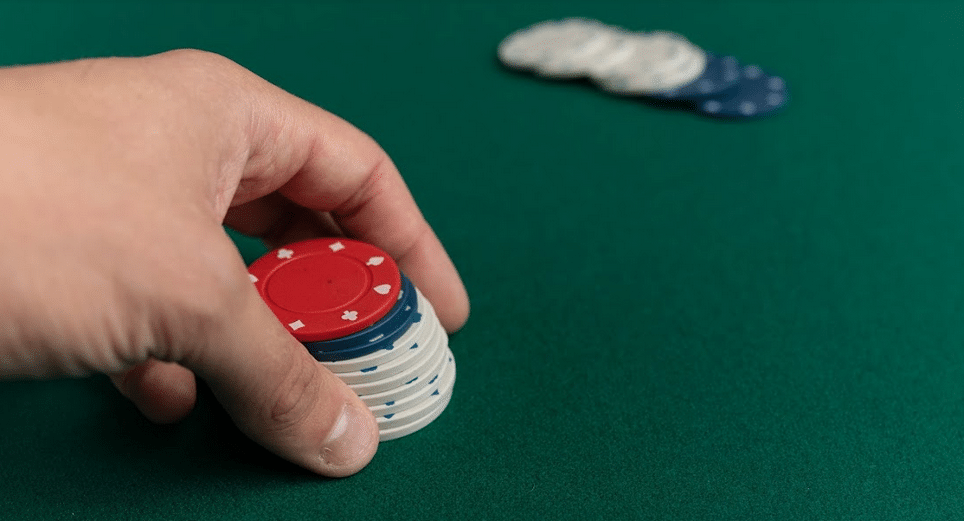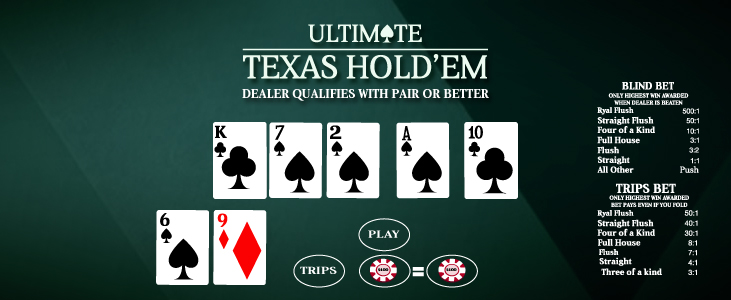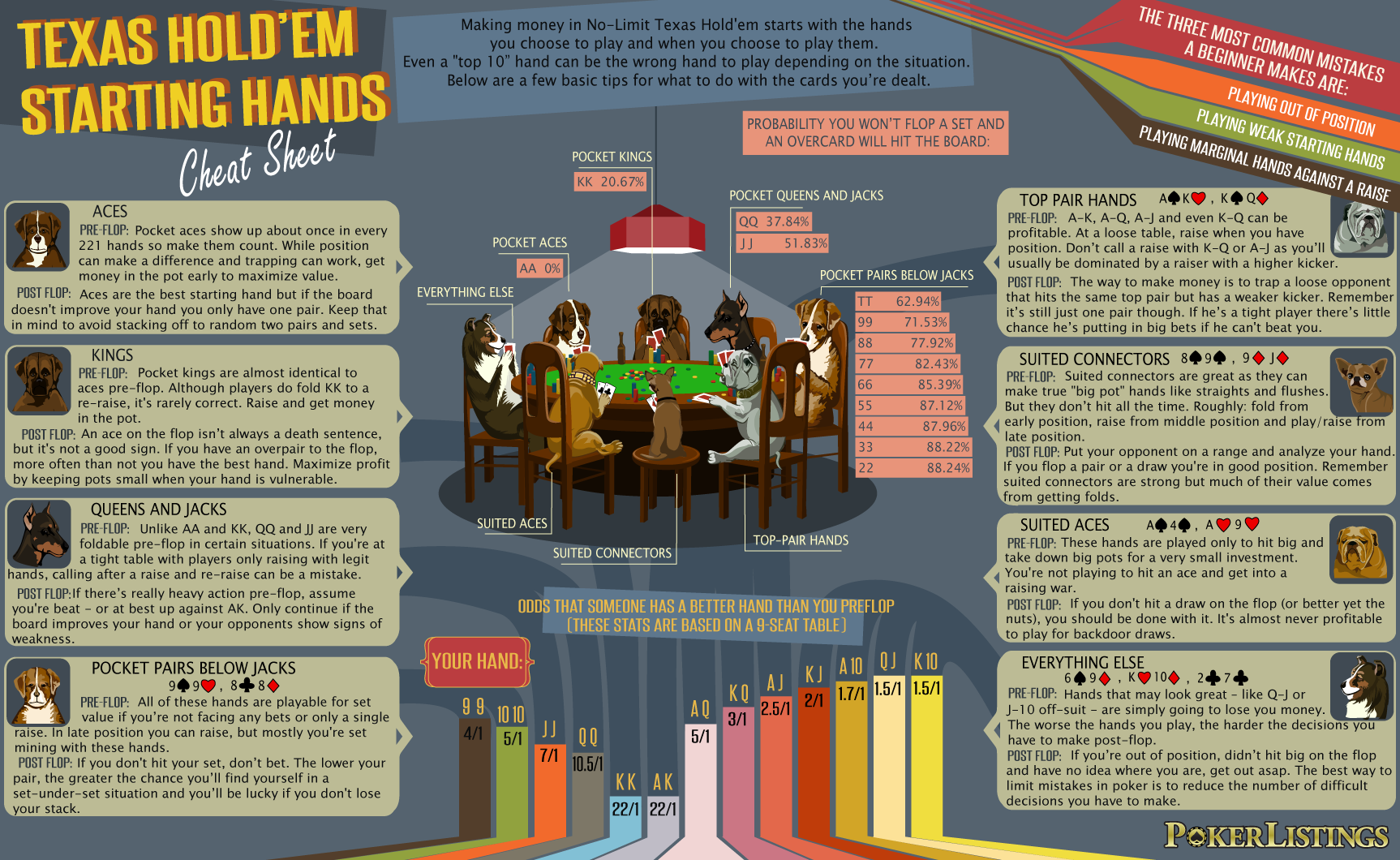Pot Limit is the least common betting type used in Holdem. It’s also pretty easy to understand. The minimum bet must be that of the big blind. The minimum raise must be 2x the big blind. So at blinds of $2/$4, the minimum bet is $4 and the minimum raise would be $8 (or 2x the last bet or raise).
Texas Holdem Minimum Raise Rules
In our lesson on the three main betting variations of poker, we used an example where a player in a no-limit game could bet far more than anyone else at the table, provided the player had such an amount. Poker is always played at table stakes, and this means you can only wager the amount of money you have in front of you when the hand begins. It is quite common for a player to run out of money during a hand. If you have more money than another player, it doesn’t mean you can bet them out of the pot because they can’t afford to call your bet. Otherwise the poker player with the most money would always win if he bet all his chips, and it wouldn’t be a very enjoyable game.
- Once a bet has been made, the minimum you can raise is the size of the last bet. So if your opponent bets $5, the minimum raise you can make is $5 (for a total bet of $10). Again, the maximum raise is the total of whatever you have in front of you. How big a No-Limit Hold'em cash game is played is determined by its blind size.
- During the 1960’s, Texas Hold’em came to Las Vegas, Nevada where it quickly became popular at the Golden Nugget Casino. Before Hold’em, the main game played was Draw Poker, which only allowed two bets. Because Hold’em allowed for four bets, there was opportunity for bigger winnings and strategic play.
All-in Bets
When a player puts all his chips into the pot he is said to be “all-in”. The important thing to know is that a player can never be bet out of a pot because he always has the option to call for all of his chips. For example, a player with $50 goes all-in, and everyone folds apart from a player who only has $30 left:

Figure 1
This player cannot match the $50 bet, but he can also go all-in for his last $30. When nobody else is involved, the first player would get back the unmatched $20 bet (i.e. his bet is $30 rather than $50). This is shown in figure 2, below:
Figure 2
In this example the shorter-stack wins the pot, but the surplus $20 is returned to player 5.
The whole point of this is that players can take back any extra money when another player is all-in for less, when nobody else has called. The same applies to an extreme no limit example, where a player might bet $10,000 in a $1/$2 game. Here’s an example where it’s folded around to the big blind, who has $10 remaining in his stack.
Figure 3
He has $12 in total and clearly can’t match the $10,000 – but he can go all-in. If he does then the player with $10,000, would take back $9,988. No more betting would take place, as there isn’t anything left to wager. After the flop, turn and river, the player with the best hand would win the $25 pot ($12 from each plus the small blinds $1).
Side Pots
It can be a little more complicated when there’s more than two players involved in a hand. This is when a side pot is created for the other players, and any further bets cannot be won by the all-in player. The all-in player is eligible for the main pot only.
Take a look at figure 4, below, which shows three players remaining in a hand. Two players have $50 each, and another has just $10 remaining. In this example the pot already contains $40 from the previous betting rounds. Player 5 makes a bet of $20:
Figure 4
Player 6 only has $10 but he can call for his last $10 (and would therefore be “all in”) or fold. If player 6 decides to go all-in for his last $10, then the last active player (player 7), who has $50, can call, but must call for $20, which is the original bet, or he can raise. If he calls then a side pot is created, as is shown in figure 5:
Figure 5

The main pot now contains $70, which is made up of the existing $40 in the pot, plus $10 x 3. Player 6 is “all in” and can only win this main pot. A side pot containing the extra $20 is created, and can only be won by the players who contributed to this side pot (players 5 and 7). The next card will be dealt and further betting will take place. Any further bets are added to this side pot, and not the main pot. Players 5 and 7, who contributed to the side pot, can win the side pot and the main pot, if their hand beats the “all in” player. If player 6 has the winning hand after the final betting round, then he will win the $70 pot, but the side pot will be won by either player 5 or player 7.
Conclusion
There has been quite a bit of information in this lesson, which to the uninitiated could be confusing. As soon as you start playing poker you’ll quickly become familiar with these betting basics because they occur very frequently. Sometimes there can be lots of different side pots during a hand involving lots of different players – whether it’s limit, pot limit, or no limit poker. This is because not everyone has the same amount of chips – and players who have fewer chips than an opponent cannot win more from a player than they contributed themselves. The important thing to remember is that a player can never be bet out of hand because he doesn’t have enough to call.
Related Lessons
By Tim Ryerson
Tim is from London, England and has been playing poker since the late 1990’s. He is the ‘Editor-in-Chief’ at Pokerology.com and is responsible for all the content on the website.
Related Lessons
Introduction
888poker is pleased to make available No Limit games of Texas Hold'em and Pot Limit games of Texas Hold'em, Omaha Hi and Omaha Hi/Lo. Additionally, No Limit and Pot Limit Texas Hold'em Poker Tournaments are offered. Before participating in No Limit and Pot Limit Poker we highly recommend strong familiarity with our Limited games.
Click here to see the rules of Limited Texas Hold'em, Limited Omaha Hi and Limited Omaha Hi/Lo.
No Limit and Pot Limit is said to be the purest form of Poker. The general game structure and rules of No Limit and Pot Limit games are identical to those of Limited games, with two very notable exceptions: There is no Lower Limit Stake or Higher Limit Stake at the table and no Cap to the Betting Rounds. Instead, the minimum and maximum amounts that players are permitted to wager are according to No Limit and Pot Limit Betting Rules/Structure.
No Limit Poker Betting Rules
Minimum Allowable Bet/Raise/Reraise: In a Betting Round, once an initial Bet has been placed, all following players wishing to Raise/Reraise must do so in amounts equaling no less than the Round's initial Bet. For example:
- Player one Bets: $10;
- Player two Raises: $10 (total wager: $20);
- Player three Calls: (total wager: $20);
- Player four Reraises: $10 (total wager: $30);
- Player five Calls: (total wager: $30);
- Player six Reraises: $20 (total wager: $50);
- Etc. until end of Betting Round.
Maximum Allowable Bet/Raise/Reraise: As the name suggests, No Limit Players may Bet, Raise or Reraise any amount that they currently have at the table.
There are no caps to the Betting Rounds. A Betting Round ends only when each active player has either: Folded, Checked or Called the most recent Raise/Reraise to the Pot, in turn.
Pot Limit Poker Betting Rules
Minimum Allowable Bet/Raise/Reraise: In a Betting Round, once an initial Bet has been placed, all following players wishing to Raise/Reraise must do so in amounts equaling no less than the Round's initial Bet. For example:
- Player one Bets: $10;
- Player two Raises: $10 (total wager: $20);
- Player three Calls: (total wager: $20);
- Player four Reraises: $10 (total wager: $30);
- Player five Calls: (total wager: $30);
- Player six Reraises: $20 (total wager: $50);
- Etc. until end of Betting Round.
Maximum Allowable Bet/Raise/Reraise:

The sum total of:
- The amount of the most recent Call;
- Plus the amount of the Raise/Reraise;
- Plus the total amount currently in the Pot.
For example:
- The Betting Round begins with a total of $20 in the Pot;
- Player one Bets: $15 (total in Pot: $35);
- Player two Calls: $15 (total in Pot: $50);
- Player three Raises Pot Limit: $80 (= Call: $15 + Raise: $15 + Current Pot: $50) (total in Pot: $130);
- Player four Calls: $80 (total in Pot: $210 Pot);
- Etc. until end of Betting Round
There are no caps to the Betting Rounds. A Betting Round ends only when each active player has either: Folded, Checked or Called the most recent Raise/Reraise to the Pot, in turn.

Texas Holdem Minimum Bet Rules Against
For assistance with this, or any of your other online gaming needs, please click here to contact us.